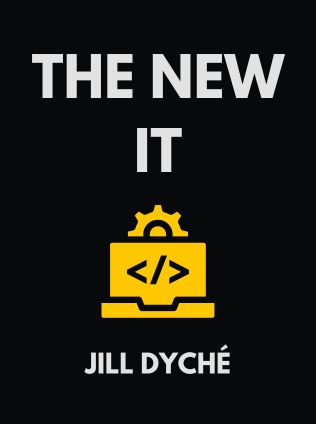
The New IT
How Technology Leaders Are Enabling Business Strategy in the Digital Age
By Jill Dyché
Published 01/2015
About the Author
Jill Dyché is the Vice President of Best Practices for SAS, a renowned speaker, author, and blogger. She has authored three books on the business value of IT, including the best-selling CRM Handbook. Her work has been featured in prestigious magazines and journals, including Newsweek.com, HBR.org, Information Week, Computerworld, and Forbes.com. In her book The New IT: How Technology Leaders Are Enabling Business Strategy in the Digital Age, Dyché provides an action-ready blueprint for building and strengthening the role of IT in companies, aligning IT with corporate objectives, and leveraging the power of technology to propel businesses forward.
Main Idea
With the rapid advancements in technology and the increasing tech-savviness of businesspeople, Jill Dyché's The New IT addresses the need for a new manifesto for technology leaders. It emphasizes the importance of aligning IT with business strategy, transforming IT departments into strategic partners rather than mere support functions. By using field-tested techniques, the book aims to help IT leaders bring their business and IT teams together, creating a truly transformative environment. The new IT, as Dyché envisions, balances strategy and delivery, is interactive and inclusive, and is as omnipresent and revolutionary as the smartphone.
Table of Contents
- Challenges: Real and Perceived
- Your IT Transformation Toolkit
- Leadership in the New IT
Challenges: Real and Perceived
What's Wrong with IT?
In the first part of her book, Dyché discusses the various complaints and issues surrounding IT in corporate settings. Common criticisms include IT's lack of business understanding, focus on resume building rather than driving business value, and poor communication with other departments. This section highlights the widespread dissatisfaction with IT and the growing trend of "IT bashing" in boardrooms and the media.
"They don't speak our language. They're too focused on résumé building and tinkering, not on driving business value." - Jill Dyché
The New Gatekeepers
Dyché identifies two new gatekeepers in the IT conversation: business units and customers. Business units, particularly marketing and finance, are increasingly obtaining their own IT budgets and setting their own technology courses. This has led to the rise of shadow IT. Similarly, customers are becoming more tech-savvy, demanding modernized, nimble, and innovative solutions from companies.
"More and more small companies are cropping up and staying small... For CIOs of more traditional companies, this means new pressures to modernize." - Jill Dyché
Forging a New IT Identity
To redefine IT's role, leaders must first understand the current challenges IT faces and then plan a new roadmap. This involves identifying challenges, choosing a brand, planning the IT portfolio, and leading the team. Dyché emphasizes three new decision levers that drive change: operation, connection, and innovation.
The IT Leader's Identity Crisis
The consensus among professionals is that change is necessary but many leaders are unsure of what to do. The issues boil down to the executive leadership's ability to include IT as a strategic lever and the culture's tendency to allow this. Dyché introduces six IT archetypes to help leaders identify their current state and vision for the future.
Sign up for FREE and get access to 1,400+ books summaries.
You May Also Like
The Lean Startup
How Today's Entrepreneurs Use Continuous Innovation to Create Radically Successful Businesses
By Eric RiesWho Moved My Cheese?
An Amazing Way to Deal with Change in Your Work and in Your Life
By Spencer Johnson, M.D.Make Your Bed
Little Things That Can Change Your Life...And Maybe the World
By William H. McRavenThe Ride of a Lifetime
Lessons Learned from 15 Years as CEO of the Walt Disney Company
By Robert Iger



















